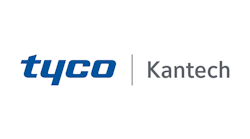Moving to the “next level” is all about timing — and that certainly holds true for the newest iterations of managed/hosted security services. Thanks to the continued of mobile apps and web-based applications, hosted services are moving in a new, more robust direction.
Although it is not a new concept, managed security is an area with a rapidly growing profile. This is particularly true among security directors and end-users who are searching for more cost-effective solutions by outsourcing the management of various security functions.
Security personnel, when deciding if managed security was the way to go for them, examined a number of factors and, in many instances, acknowledge they no longer have the manpower, infrastructure, capital or time to stay on top of all the moving parts needed to run and maintain an access control system.
The decision to outsource their security requirements was not unlike the decision by many companies to seek a third-party for IT. As staffing shrunk and people were pulled in more directions, the questions arose: Do we have the resources to do this on our own? Can the security department stay on top of everything that is required to manage the security system, not only generating new cards and photos IDs or putting additional doors and elevators on line, but also backing up data, upgrading software and maintaining the equipment?
Studies have shown that despite good intentions, some 90 percent of companies are negligent when it comes to staying on top of system updates and backups, thus risking the loss of important data and likely incurring costly service calls when a system failure does occur and significant data is lost.
The Benefits
In a hosted or managed security arrangement, many or all of the critical, yet day-to-day functions mentioned above are passed along to the managed security provider that can operate under various scenarios of fully managed, hosted or hybrid models.
In the hosted set up, the Managed Services Provider (MSP) hosts the servers, while the administrator handles the other functions, such as issuing cards or setting access levels. With a fully managed system, all security needs, including hosting, administration, maintenance and ongoing management of the system is outsourced. End-users looking for some hands-on control of their system but who are not equipped to handle full system management can often work with their MSP to create a custom or hybrid solution that meets their needs.
What has really made managed security more workable and dynamic has been the ongoing developments of cloud-based systems and web-delivered and mobile applications. The addition of these features has enabled the growth of outsourced security and is enabling security administrators to reap the benefits of a technology-rich situation.
With data residing in secure, cloud-based servers, capacity is no longer an issue and scalability is achieved much more easily. The debate about servers and storage is trumped by the knowledge that a system can now grow from 10 doors to 100 doors to 1,000 or more and it does not take a room full of onsite hardware to achieve it. Instead, with nearly limitless capacity in the cloud, security administrators can seamlessly add doors, cards and even entire campuses as a business grows.
Easy Remote Access
Also buoying the migration to managed security is the knowledge that security administrators can perform functions via web browsers, enabling them access to their systems from wherever they may be at the moment. No one is required to be sitting at a specific desk in a control room; instead, they can view and interface with the access system via a web portal from a laptop at home or in a hotel room or even while traveling on a plane.
Driven by consumer expectations, mobile applications enable users to remotely manage a multitude of everyday tasks — security and access control are no exception. Similar to the web portal, the advent of the smart phone and tablet and the creation of applications for these devices that link with the access control system has enabled administrators to execute tasks that used to be handled in front of a computer screen. Everything from report generation to updating and managing ID cards, to viewing event history can now be handled on a mobile device.
The focus is no longer on hardware and making sure the infrastructure is there to support necessary tasks; instead, the shift is now to applications and making them as feature-rich as possible. Companies are stepping away from the hardware and concentrating on the various ways, through the use of mobile devices, that they can handle important functions and also make better use of each person’s time. Administrators have already been liberated from the burdens of maintaining hardware, training staff, updating databases and the like. Now they can focus on reaping the benefits of portability and scalability from web and mobile apps.
For those who are still not convinced about the benefits of outsourcing security management, these web-based and mobile applications may be the final push to get into the game.
Because of the direction in which technology is progressing, the capabilities of this new security platform will only grow. With the availability and convenience of fully integrated security systems, the next step is the migration to fully managed security, including intrusion and video surveillance. This will give security managers the convenience and ease of use they require, solidifying managed security services for years to come.
Scott McNulty is Senior Product Manager at Kantech, part of Tyco Security Products. He has more than 14 years of experience in the security industry including access control, video and intrusion. He can be reached at [email protected].



